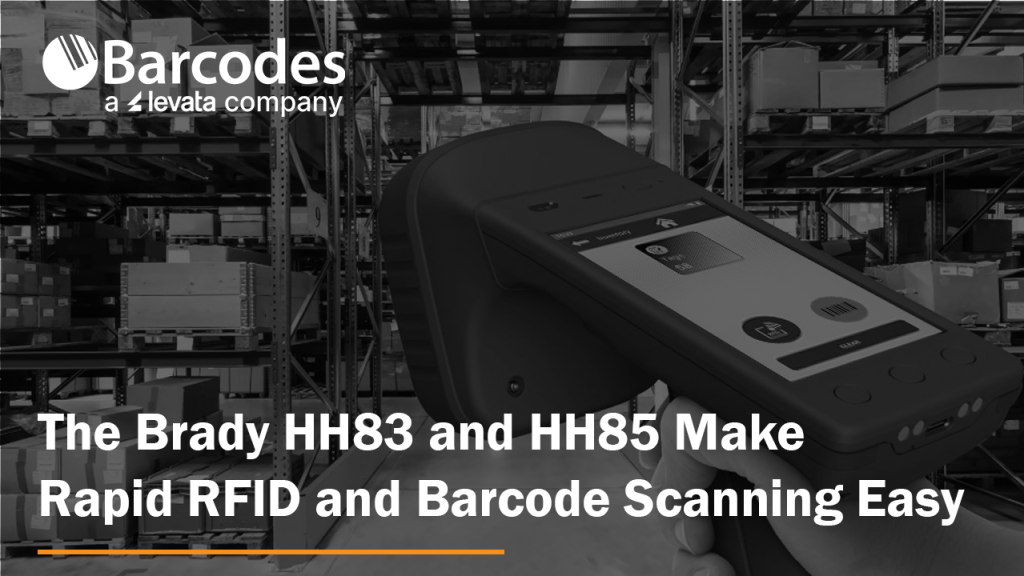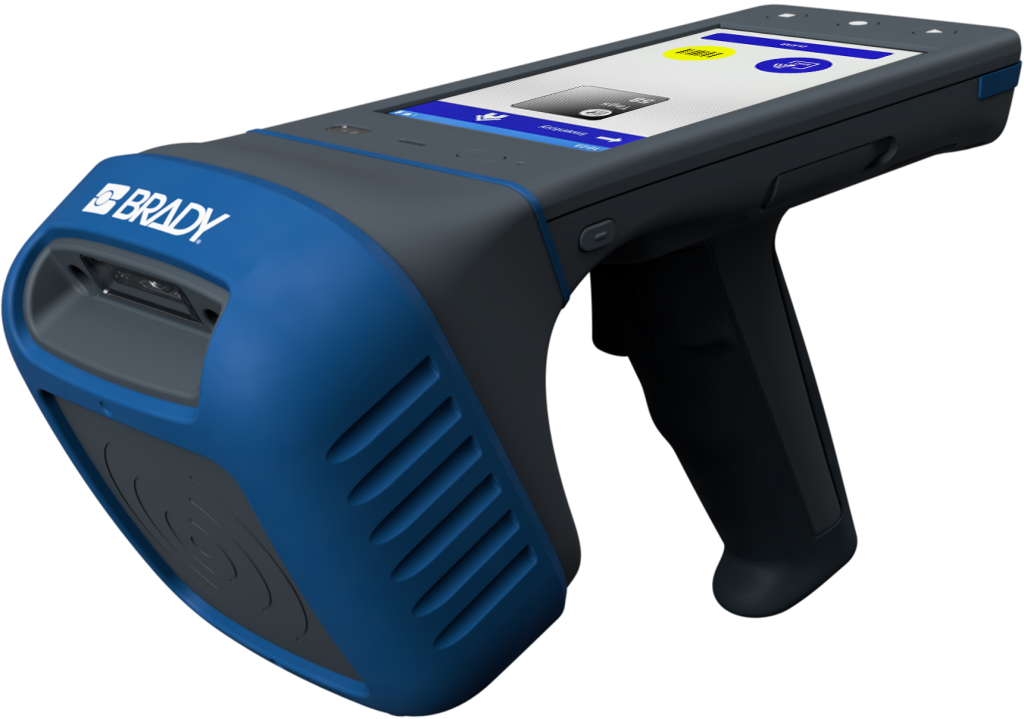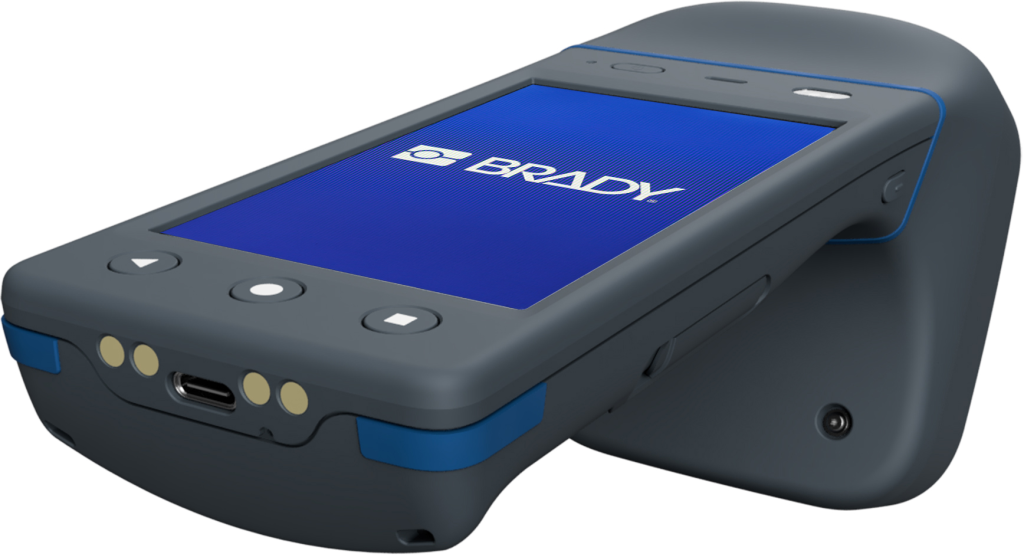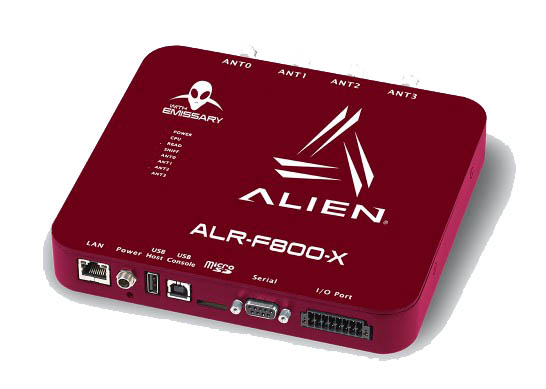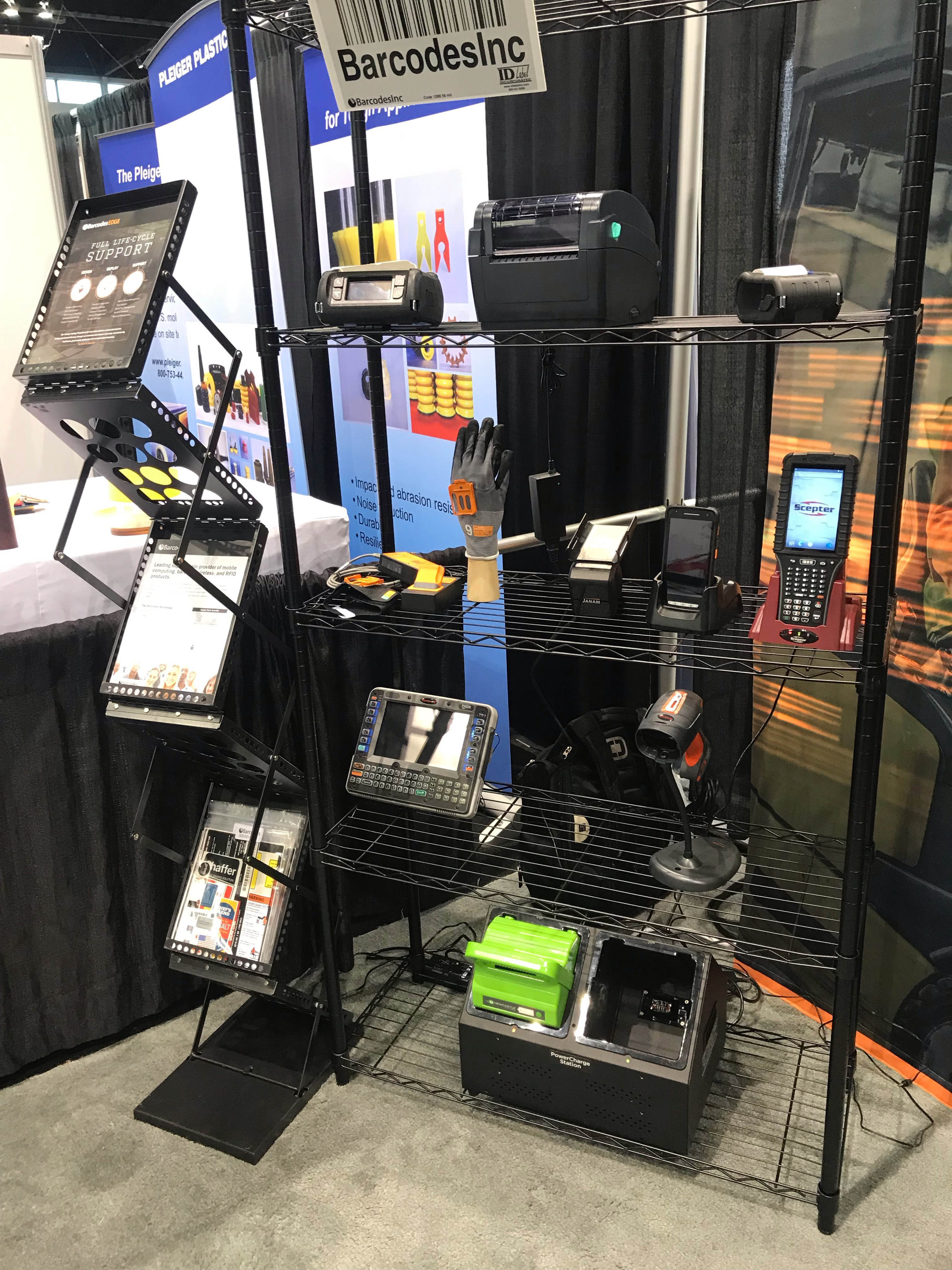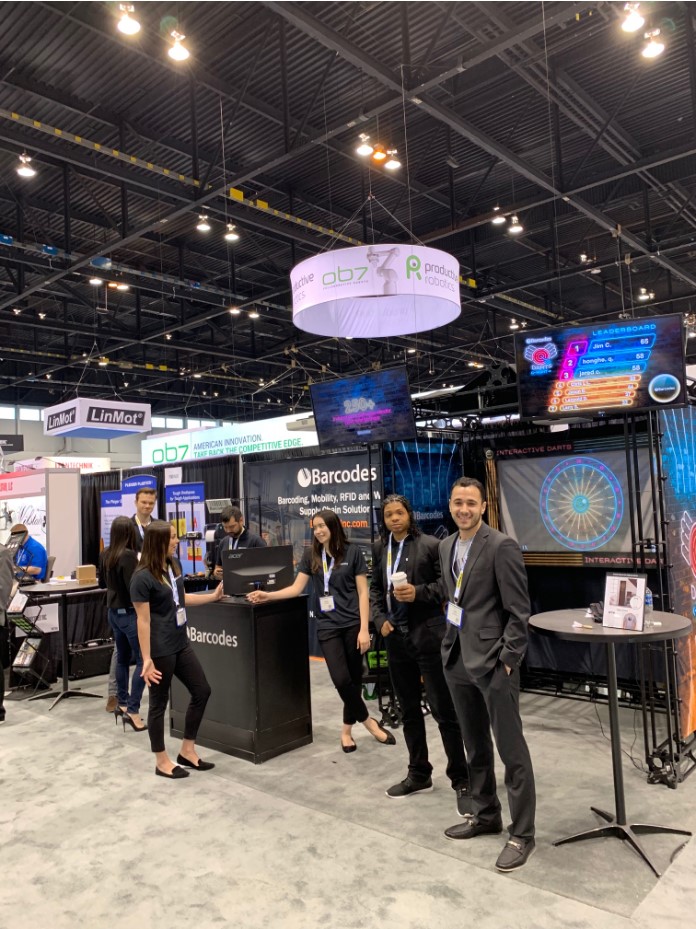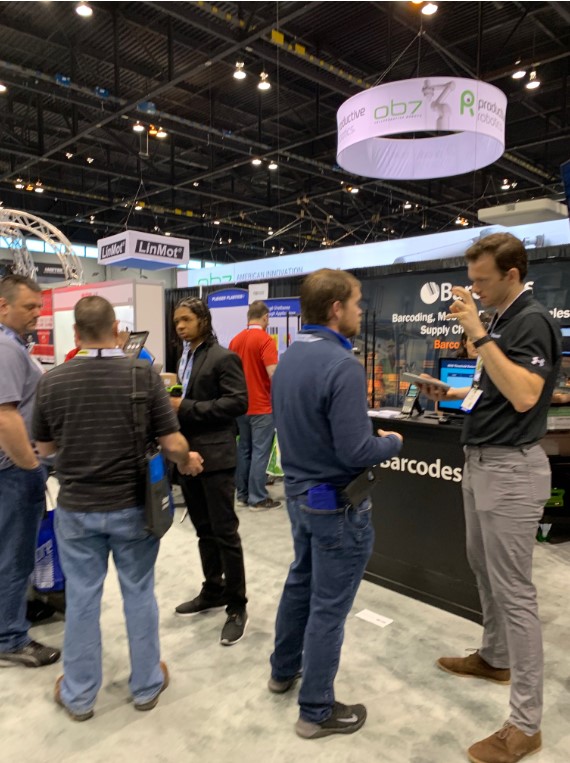For High-Performance RFID & Barcode Scanning, Look No Further than the Brady HH83 & HH85
Brady RFID Readers
Brady offers a range of RFID readers in a variety of form factors and configurations to ensure customers always have the right reader for their application. Equipped with powerful UHF RFID engines based on the latest technology, high-performance antennas, a unified API, and support for accessories, Brady RFID readers offer best-in-class performance and unparalleled flexibility.
Brady RFID readers support all common RFID use cases, including asset tracking, work in process tracking, inventory management, and vendor managed inventory.
Introducing the Brady HH83 and HH85 RFID/Barcode Scanners
Effective and user-friendly equipment, such as the Brady HH83 and/or Brady HH85, is critical in industrial settings. These exceptional RFID readers are both durable and rugged, yet also ergonomically designed and lightweight. For dependable and effortless operation throughout a long shift, look no further than the HH83 or HH85.
Both the HH83 and HH85 RFID readers are an invaluable tool for managing end-to-end data collection, with software-controllable RFID antennas, best-in-class scanning performance at ranges of up to 50 feet, and up to 18 hours of hot-swappable battery power. Here’s what you can expect from Brady scanners.
Key Features
- Single API for all devices
- Minimal software integration time
- Flexible and rapid software development with Android 10 and NUR API
- RFID and barcode scan range of up to 50 feet
- Work glove friendly touchscreen displays
- 5 foot drop protection
- Strategically placed trigger and buttons are easy to operate
- Rugged, durable construction with IP65 rating for dust, particle resistance
- Two year hardware warranty
- Responsive technical and customer support
For more technical details, download the HH83 HH85 spec sheet.
Watch a Demo of the HH85 RFID Reader
Enjoy high-performance RFID and barcode scanning with both the HH83 and/or HH85 from Brady. Contact us today to speak to an RFID expert who will help find the best solution for your organization.
Webinar: How to Automate Supply Chain Processes with RFID

About this Webinar
How to Automate Supply Chain Processes with RFID
Thursday, February 22 1:00 – 1:45pm CT
Presented by:
Tom O’Boyle, Principal RFID Solutions Architect, Levata
John Cooke, Director of Software Development, Smart Label Solutions (SLS)
Easily Scale RFID Technology with SLS Integration
RFID is revolutionizing shipping and receiving in a more scalable fashion than ever before. Purpose-built RFID solutions are improving order to delivery time and shipment accuracy across the supply chain while reducing labor intensive manual counting.
Watch this 30-minute webinar and discover the advantages of RFID for your organization:Â
- How to improve your supply chain visibility by automating your shipping and receiving functions using RFID through improved read accuracy to the item level and sub-second event alarming
- Why using professional grade software is an essential component of your RFID Solution, providing real-time visibility into the movement of assets and products, whether that be at a dock door, a tunnel or with a mobile device
- How RFID is easy to scale and deploy through rapid plug and play integration
RFID Webinar: Improve Returnable Container Tracking with RFID
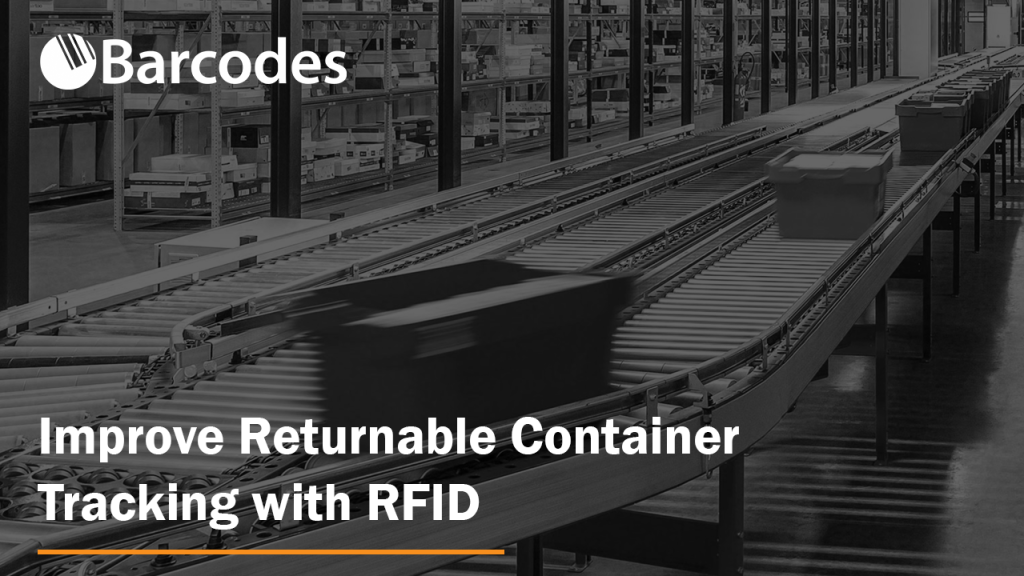
Webinar
Improve Returnable Container Tracking with RFID
Thursday April 20th 1:00-1:45pm Central
PRESENTED BY:
Christopher Vassilos – Senior Solutions Architect, Barcodes Group
Michael Daily – Senior Solutions Engineer, Impinj
RFID-Based Container Tracking
Upon delivery, it’s common for reusable containers to not be returned to the sender, with annual shrinkage rates often exceeding 10%. Keeping track of your Returnable Transport Items (RTIs) can be challenging, especially when logging their location depends on manual processes like scanning.
In this webinar, discover the benefits of RFID-based container tracking:
- Reduce the number of misplaced pallets, kegs, and boxes. Less new delivery assets need to be purchased, and shipments are not interrupted due to lack of totes.
- Track each asset as it leaves and returns to the warehouse, allowing you to determine its exact location immediately and whether they have yet to return.
- Calculate the flow of returnable assets to fully understand your shipping capacity for the present and future.
- Improve utilization of workers since it takes way less time to scan RFID tags than barcodes, due to its fully automatable reading without line-of-sight requirements.
Watch the Full RFID Webinar Recording
Improve Returnable Container Tracking with RFID

Returnable Transfer Items (RTIs), or returnable containers are critical assets for almost all manufacturing and logistics organizations. RTIs transport stock and commodities from one site to another. However, keeping track of your RTIs is a different story. Well-known manufacturers and logistics expert still often rely on manual methods, such as traditional scanning, spreadsheet, or pen and paper.
This leads to a major issue: inventory shrinkage.

Mismanagement of returnable containers owing to theft, unrecorded damage, or simply the inability of consumers to return empty pallets, kegs, and boxes costs a fortune.
How are Your Returnable Transfer Items Being Tracked Currently?
Barcode labels used to tag the cargo of a container during shipment are often non-permanent. Traditional barcode scanners and labels identify the contents of the container, but seldom provide reverse logistics tracking for the containers themselves.
Using permanent barcode labels as the foundation for a container monitoring system is not feasible. I know that might be strange to hear from a company called Barcodes, Inc. But scanning labels at various stages of the supply chain sometimes necessitates extra human effort, which is even more difficult when empty containers pile up.
One solution is to establish a tracking system utilizing modern asset tracking technology.
Reducing Yearly Inventory Shrinkage with RFID
“15% of all pallets in circulation vanish” or “20% of all packaging/equipment is lost owing to consumers retaining them for their own use or third parties removing them for their own use.”
SLS RFID 2016 Study
Inventory shrinkage is a major issue in the management of returnable transfer items (RTIs), which include all types of shipping containers, packaging, pallets, kegs, and boxes.
Shrinkage due to theft, unreported damage, or just consumers failing to return empty containers is a serious concern in this field.
Estimated annual shrinkage rates are anywhere from 3 to 9%. If you’re constantly replacing lost or stolen RTIs, the impact on profitability is a huge problem.
For organizations to decrease RTI shrinkage, RFID is appealing due to completely automated scanning without line-of-sight, as well as mass tag reading. The key advantage of RFID-based container monitoring systems is an improvement in container return rates. New containers are purchased in smaller batches and less frequently.
What Data Can Be Tracked with RFID Tags?
Integrating the RFiD Discovery system with your ERP system enables company-wide visibility of your RTIs, ensuring that essential assets are accessible at the relevant locations to fulfill any transportation request.
Exactly what the RFID ultimately tracks depends on your unique tracking requirements. Here are some examples of the depth of data you can store in a small RFID tag:
- Container Name
- Size
- Location
- Weight
- Item Quantity
- Container Properties
User memory on tags stores data. The serial number field can be pre-programmed or user-assigned.
The air-interface protocol standards for passive HF and UHF tags, such as UHF EPC Gen 2, define basic functions like read-write and which memory banks or blocks can be written to. Reader manufacturers include these low-level commands with higher-level subroutines in their software development kits for application developers.
How to Use RFID to Tag RTIs
RFID labels are long-lasting and more durable than traditional labels. RFID tags attach exceptionally well to returnable cargo and resist machine washing operations as well as harsh elements for much longer.
Any RTI equipped with an RFID tag can be detected by a small number of strategically located readers. The location data is delivered back to the central RFID Discovery database, where it may be evaluated.
This database allows you to discover how many RTIs have been sent to a specific supplier or customer, so you know which trade partner to approach when requesting a return.
When shipping containers are in range of an RFID reader, the information on the tags can be automatically acquired using a wide variety of methods:
- Fixed reader installed at a warehouse entrance or loading dock
- A mobile reader installed on a forklift
- Handheld reader brought inside a business partner’s facility for rapid inventory
What are the Main Advantages of Using RFID for Returnable Asset Tracking?
There are several advantages of using RFID to track returnable assets.
1. Recoup Billions of Dollars in RTI-Related Losses
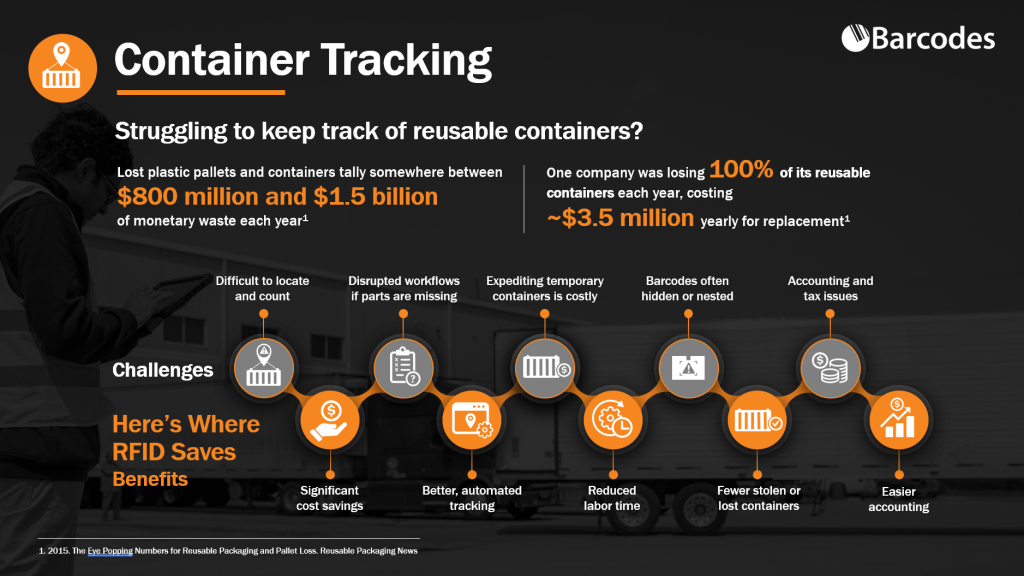
Reusable assets are returned to the sender after delivery, usually full of new goods and not empty. Entire industries are dedicated to capitalizing on reverse logistics and maximizing the value of containers.
So why do we pay far less attention to reusable assets compared to sold commodities and container space? In order to get a bird’s eye view of costly shrinkage areas, your immediate shipping capacity, and overall supply chain health, it’s critical to assess the flow of returnable assets as well.
If RTIs arrive in the incorrect place or are lost, the transfer of products becomes difficult or impossible, thereby causing delivery delays. And massive container replacement costs.
These misplaced assets represent billions of dollars in losses, since new delivery assets must be acquired. We will say again: RFID saves billions of dollars.
2. Track Every Asset Location With a Detailed Evidence Trail
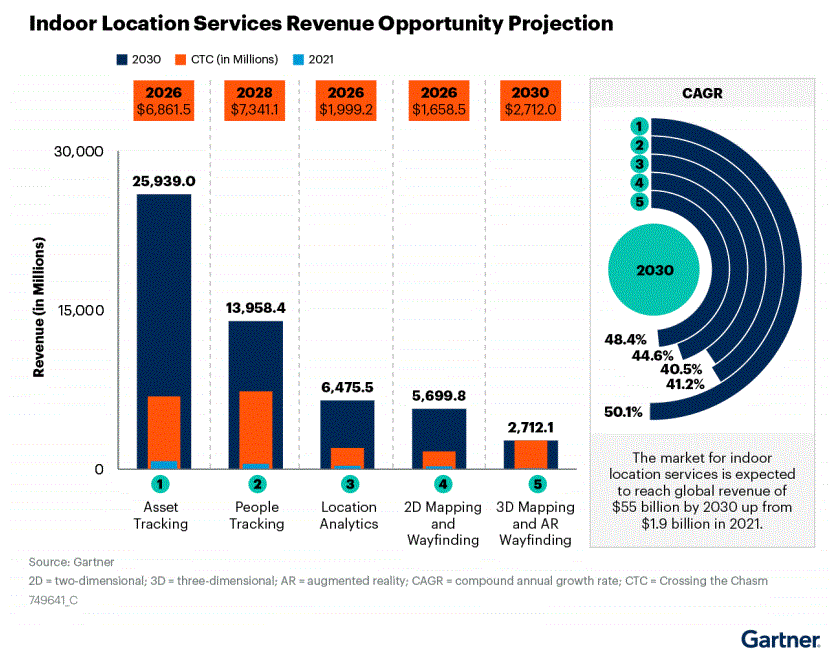
While we like to imagine most people are honest and good by nature, the reality is that customers and suppliers are not going to eager to assist when the subject of locating your missing valuables is brought up. Tough luck.
Instead of playing the blame game, utilizing an RFID system to track each asset as it leaves and returns to the warehouse allows you to instantly establish its specific location, and whether it has yet to return.
This goes for both goods sold as well as the RTIs carrying them. Put another way, your returnables are much more likely to return.
3. Increase Visibility of Container Locations, Available Stock, and Overall Condition
Though shipping should be a precise science, we know that’s not always the case.

Businesses depend on RTIs everyday, but lack visibility over the availability, location, and quality of their RTIs.
When organizations incorporate careful pallet monitoring, tote box tracking, and stillage tracking, it’s much easier to manage a large pool of RTIs without bleeding money. Additionally, there is no longer a need to keep just-in-case containers on the sidelines, because of increased visibility into the “who, what, where, and how many?” questions.
4. Improve Labor Utilization at Every Level of the Supply Chain
Scanning RFID tags takes substantially less time than scanning barcodes. Similarly, RFID is a more appealing identifying solution for reusable assets since users do not need to manufacture new barcodes or print new labels.
Logistics and operational leaders can simply re-encode the same RFID tags again and again without increasing headcount or allocating redundant processes to busy workers.
Lastly, RTLS on RFID can significantly reduce the amount of time workers spend searching for specific inventory. In a field such as healthcare, nurses estimate they spend at least an hour per shift finding equipment. That really adds up when looking at overall labor utilization.
Evaluating and Deploying an Effective RTI Tracking System
Tracking RTIs with RFID helps prevent your assets getting lost or stolen, reduces disputes between trading partners, enables rapid inventory cycle counting, and quickly identifies shortages. Your organization could be saving billions of dollars.
Barcodes, Inc. is your trusted RFID partner and integrator. Contact us when you are ready to elevate your RTI management and discover the magic of RFID tracking. It’s easier to deploy with a partner you can trust.
Stages of a Successful RFID Deployment – Webinar
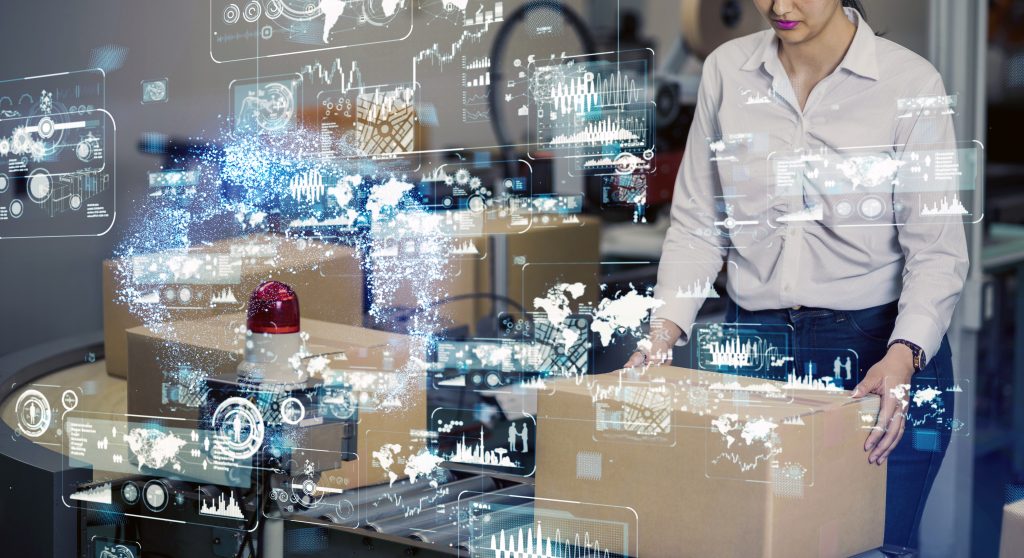
Webinar
Stages of a Successful RFID Deployment: From Discovery to Implementation
Thursday, October 27th, 2:00 PM – 2:30 PM ET
Presented By
Christopher Vassilos – Senior Solutions Architect, Barcodes Group
Nat Hillary – Solutions Engineer for Strategic Accounts, Impinj
About this RFID Webinar
Nearly 80% of attendees to our RFID webinars have not implemented the technology yet but are interested in exploring this. How do you determine if RFID is right for you and what steps are part of a deployment?
During this webinar, you will learn the answers to the following questions:
- Based on your unique needs, how do you determine if RFID can improve the flow of goods and inventory accuracy, and at what cost?
- Does RFID fit your organization considering your people, processes, and technology?
- How do you test reading RFID tags at your facility?
Watch the Full RFID Webinar Recording
Interested to learn more about our RFID deployment solutions and services? Contact us today for a consultation and see if it’s the right fit for your organization.
Where to Place an RFID Inlay
Printing and encoding RFID “smart labels†with an RFID-enabled printer has traditionally been difficult; a classic case of “the Devil is in the details.â€â€¯ One difficulty users have wrestled with has been “inlay placement.â€â€¯ Inlay placement refers to the location of the RFID inlay under the label’s face stock.  Although inlays are generally oriented horizontally under the face stock, the inlays can be located towards the bottom of the label, towards the top, or anywhere in between.  In the picture to the right, for example, the inlay is relatively close to the bottom of the label, the “leading edge†as it is often called, because this edge comes out of the printer first.
Almost every printer brand – and even model – has traditionally had detailed, complex specifications regarding inlay placement, with different specifications for each and every inlay on the market.  The location of the inlay has to be a particular distance from the leading edge of the label in order to maximize the printer’s throughput (speed).  Just a millimeter or two either way, and the performance of the printer can suffer dramatically.  What a mess.  Given that printing and encoding RFID labels is already slower than printing traditional barcode labels, any further loss in performance has often been catastrophic for the end-user.  Waiting for your RFID labels to print and encode can hold up an entire production line.  This all meant that for your printer brand and model, you needed to make sure to order labels with an optimal inlay placement.
Precise inlay placement also causes some additional problems:
- It makes selecting labels more difficult. Users need to order their labels very carefully to ensure correct inlay placement.  Does your purchasing department understand inlay placement?
- It can cause delays in sourcing labels.  Often, a convertor (label manufacturer) will have exactly the label size you need – but with incorrect inlay placement for your printer.  To get labels with optimal inlay placement, the convertor needs to configure their entire production line and run a new batch of labels for you.  This can take several days to several weeks.
- Finally, requiring a specific inlay placement can mean that users may pay more for their labels.  A quick Google search of classic paper thermal transfer 4×6 RFID shipping labels will show some surprising results.  The very same labels from the very same vendor can have dramatically different prices depending solely on inlay placement.  It all boils down to supply and demand, but if you are on the wrong side of the equation, you may have to pay significantly more for your labels.
With Printronix Auto ID’s current line-up of RFID printers, these headaches associated with inlay placement are now a thing of the past.  Printronix RFID printers have a unique firmware (the software brains in the printer), which does what they call “Encode During Print.â€â€¯ In clearer language, this means that the printer will first print some of the label, then switch over to encoding, then switch back to printing and finish up the label.  The printer will automatically either print or encode at any given moment depending on where the label is relative to the printer’s printhead and RFID encoder.  The traditional approaches for RFID printers were to either first print the entire label, then encode the RFID portion (“Print then Encodeâ€) – or to first encode the RFID, then print the label (“Encode then Printâ€).  But with these traditional approaches, if the inlay is not optimally placed, then the printer needs to back- or forward-feed the label to align it for an operation (printing or encoding) at any given moment.  With Printronix’s Encode During Print functionality, back- and forward-feed are eliminated (other than to overstrike bad labels, which is another blog topic for another day), regardless of inlay placement.
So far, we have been talking about labels like 4×6 shipping labels that allow different inlay placements.  But what about all of the RFID labels, “tags,†on the market that have predetermined inlay placement?  For example, on-metal tags, plant stakes, small pharmaceutical labels for cold-chain applications, “RTI†tags (Returnable Transport Items), etc., etc.  There are many such tags on the market, and more are being developed and released all the time.  These tags generally have a fixed inlay placement based on their physical design and on simple commercial considerations – they are meant to be “Off-the-Shelf†(OTS) products.  This is another area Printronix’s Encode During Print functionality shines even more.  Because the Printronix printers do not care where the inlay is located, you can use any of these tags and still achieve maximum throughput.
And these unusual tags often pose physical feed challenges for RFID printers. For example, on-metal and RTI tags are often thicker than normal smart labels, and they can have abrupt edges between labels, large gaps, etc. Both Printronix’s T6000e and T4000 series printers were designed from the ground up to work with these more difficult constructions.  The printers are spec’ed for labels up to 1.2mm thick and are available in 4†and 6†print-widths, allowing you to print and encode a wide variety of tags from a single printer – all without sacrificing performance.
Finding the right RFID solution is always a challenge and having the right resources and help are critical. If RFID sounds like a suitable solution for your business or you have additional questions, feel free to contact us at Barcodes, Inc. We’re always happy to help you find the right solution for your needs.
Increase Speed and Accuracy with Impinj RAIN RFID
Impinj’s RAIN RFID collects accurate, real time data, so businesses can gain critical insight to make intelligent decisions whenever and anytime they need.
Manual data can cause inventory errors, mis-shipments, and low visibility in your supply chain. Deploy Impinj’s RAIN RFID the future of supply chains begins at the dock door, configurations to suit any operation environment. Up to 100% pallet level accuracy, and automated proof of shipment compliance and up to 30% increased in dock door output.
Increase efficiency in your supply chain with RFID and drive immediate result to your operations. Ideal for applications in retail, healthcare, supply chain, logistics, industrial manufacturing, hospitality, and air transportation, and more.
Benefits:
- Can achieve up to 99% accurate inventory data
- Always know where items are located at
- Reducing out of stock and unnecessary markdowns
- Make critial business decisions with confidence
Contact Barcodes if you need an RFID solutions, we can help with product solution that fits your budget and installation.
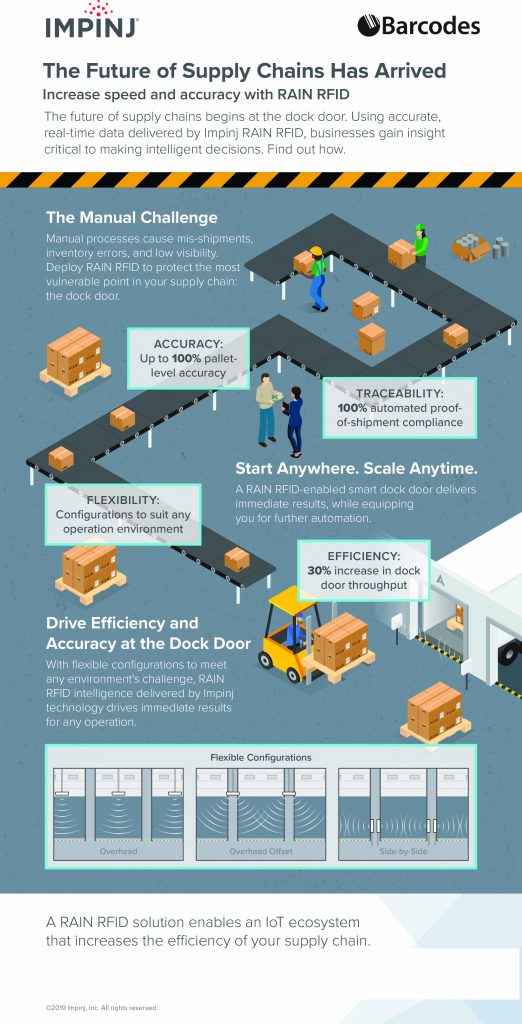
Alien ALR-F800-X Series Enterprise RFID Reader

The Alien ALR-F800-X Series Enterprise RFID reader with Emissary is the industry’s first dynamic reader and peripheral management platform. It simplifies RFID infrastructure, installation, operations, and maintenance by combining an enterprise RFID reader and Edge service to a multiple- reader visualization and management platform.
What is Emissary?
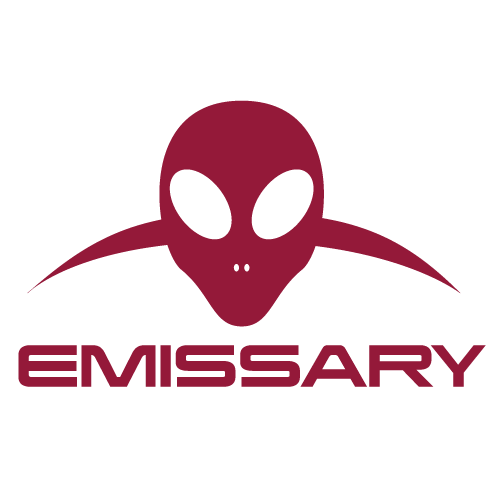
Emissary allows visualization of readers, antennas, and peripherals such as traditional I/O devices (light stacks, motion sensors, door switches, etc.) into an easy to use graphic user interface (GUI). It also allows configuration and support of additional readers and read points without the need of a traditional Edge Server. All built in to the ALR-F800-X with no extra cost, downloads, installation, or setup.
The Alien ALR-F800-X with Emissary RFID reader allows facilities to simplify multi-reader workflow creation and reduces overall cost of deployment and on-going maintenance. The reader serves as both a middleware and an application host. By processing data elements at the source, the value of the data is exponentially increased, and the individual read points can be examined and evaluated in real time. The data captured can enable detailed analytics that play a vital role in critical decision making.
Features:
- Reader and multiple reader configuration and management in one device
- Logical/ user friendly location naming
- Built in common activities (ex: read tag, turn on light, and send data)
- Flexibility to change workflow
- Automatic interpretation of the correct tag data standard when tags are read
- Manage tag read data (reports) can be transferred to the cloud or server (minimizing data transferred)
The ALR-F800-X with Emissary brings in the benefits to manage multiple readers and read points from a single Emissary unit, reduce overall cost of deployment, on going maintenance, flexible workflow, and simplified IT integration. With 3 configurations of the ALR-F800 RFID reader to choose from for any application size and budget requirements that your business may need.
Contact Barcodes if you have any questions on the Alien ALR-F800-X RFID reader or need an RFID solution. We can help find a solution that fits your application size and budget to construct a more efficient RFID solution for your business.
Join Barcodes at Promat, Booth# N6756!
We are at Promat! Meet us at our booth# N6756!
Barcodes is North America’s leading provider of barcode, mobile computing, point-of-sale and RFID products and solutions. With more than 70 product categories for asset management and inventory tracking, we help customers increase efficiency and reduce costs through implementing fast, accurate electronic information flow solutions, customized for any budget or business size.
We are showcasing our latest distribution and supply chain equipment and solutions at ProMat! Find your WOW, discover the latest solution to move your business forward. Join us from April 8-11th at Chicago’s McCormick Place to learn all the latest ideas and solutions to drive efficiency and productivity in your workforce. Learn how we can help design, deploy and support your automated supply chain. Visit us at Booth #N6756 and book a meeting and we’ll reserve a giveaway just for you! (while supplies last). Book a meeting with us here.



